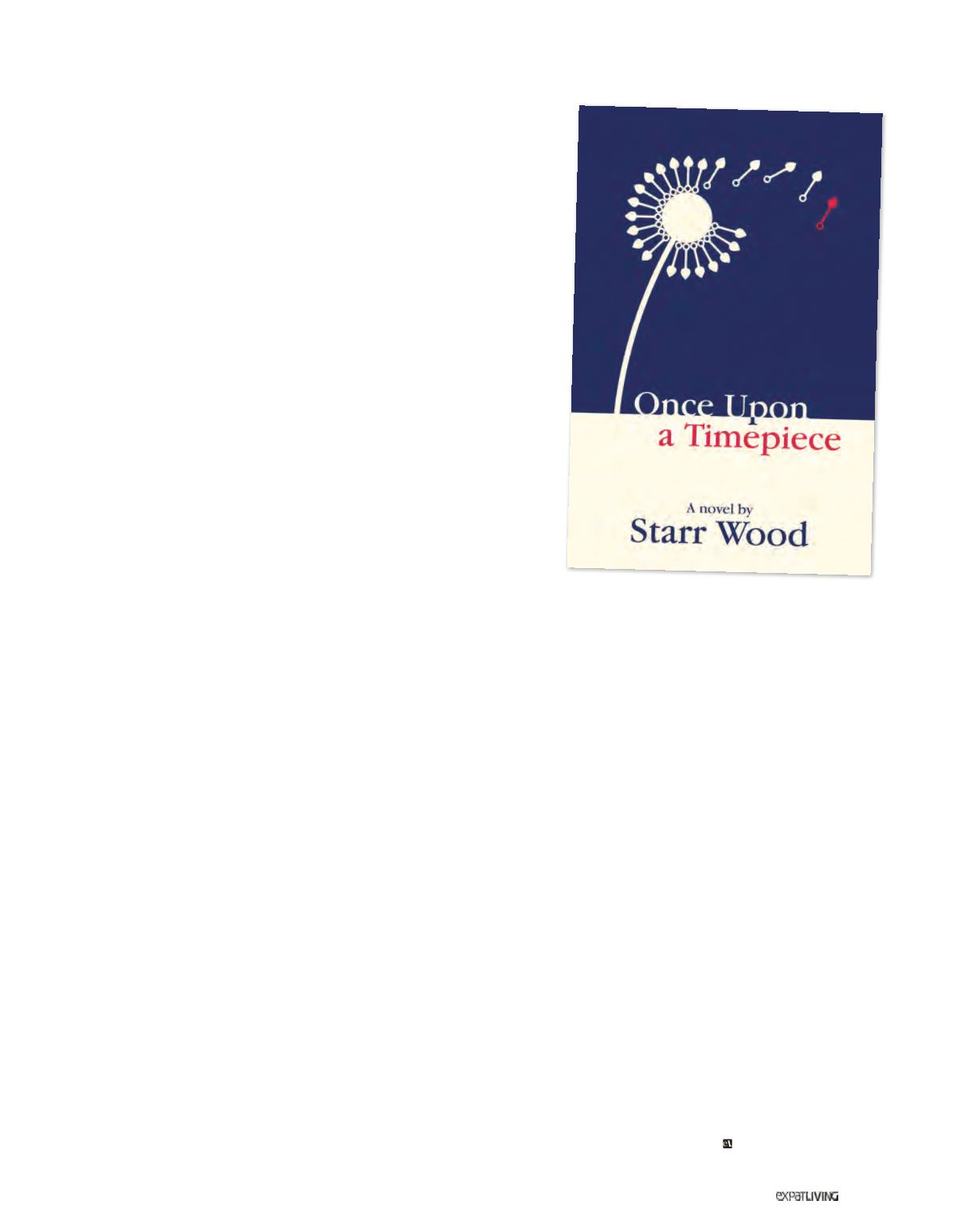

AUTHOR PROFILE
201
October14
and they’re linked chronologically in
that the stories, or chapters, follow
consecutive months of a particular year.
The book is set in the year 2012, it starts
in January, and ends in December. The
characters in each story are strangers,
but they’re all linked by an antique gold
watch that passes between them.
Collections of linked short stories can
be found all through history. Take
The
Decameron
, by the 14th-century
Italian writer Giovanni Boccaccio,
comprising 100 tales told over 10 days
by 10 young people who have left their
plague-ridden city and retreated to
the countryside. Other examples are
Chaucer’s
Canterbury Tales
and the
legendary
One Thousand and One
Nights
, set in Persia.
Where did you get the idea
for Once Upon a Timepiece?
I’d had the ideas for some of the stories
brewing in my head for a long time. In
fact, I’d written some of the stories long
before the book idea came about. So
I had a lot of the material already. And
then I was struck with the idea of putting
them together.
I wanted to express some thoughts
about the connectivity between people,
the links that join people in ways they
don’t see. We often walk through our
lives without really recognising the links
that connect us; indeed, often those
links are entirely unseen.
The other big theme in the book is
time, how time influences people and
how we perceive the impact of time
on our lives. Hence, the importance of
the watch being the object that passes
between the stories. The two ideas –
connectivity and time – go together
in interesting ways: as time flows, it
links both people and disparate events
together.
The book has a playful approach.
There’s a twist in each tale – I hope not
a gratuitous twist, but one that brings
significance to what’s gone before.
When did you start writing?
From the age of 15 or 16, my first
aspiration was to be a novelist. One of
the reasons I went into journalism was
because I thought it was the closest
thing to being a novelist, but I
no longer think that’s true.
J o u r n a l i sm i s a b o u t
explaining things as simply
as you possibly can, so that
people understand them;
it’s all about “telling” a story
in a straightforward way. By
contrast, the golden rule of
fiction writing is “Show, don’t
tell.” You want readers to
figure it out for themselves,
which is ultimately a deeper
and more meaningful reading
experience.
With a wife and three
children, how and when
do you write?
It’s not easy. The other
golden rule of writing is
“Writers write”, so if you want
to be a writer, that’s what you
have to do, preferably every
day. Most days, I get up at 5am and write
from 5am to 7am, before the family is up.
Like many people in Singapore, I
travel a lot – about four times amonth, so
I spend a lot of time in airports and hotel
rooms.
Once Upon a Timepiece
was
written in at least 11 or 12 countries.
I wrote one story almost entirely while
sitting on the floor of Mumbai airport,
waiting for a delayed flight.
How did you go about getting
your first book published?
As any writer will tell you, it’s a hard
and soul-destroying process, full of
rejections, so you have to be patient
and persistent. I think the most sensible
route is to find a literary agent, as I did.
Luck plays a big part, too. Not all that
gets published is good, and not all that
is good gets published.
What are you working on now?
Like most writers, I have at least four or
five different books in different stages
of progress. For about 14 years, I’ve
been working on a historical thriller set
in fifth-century Sri Lanka – breaking all
the rules that you should write about
what you know!
I’ve now completed the first draft, but
it’s been a 17-year passion project, a
labour of love.
Another of my works in progress
has a similar concept to
Once Upon
a Timepiece
, in that it revolves around
an object that changes hands, linking
the people and their stories. It’s set in a
pub in the UK, and the linking object is
a coin: someone uses it to buy a drink,
another puts it in the vending machine,
another loses it in a bet, and so on. Each
of the characters gives you a different
perspective on the community, and
those different perspectives combine
to tell a bigger story.
There’s no shortage of ideas, just a
shortage of time to realise them!
How do you come to have such a
wonderful name?
Starr is actually my middle name. The
family name, Starr Wood, goes back
nine generations to Captain Starr Wood,
an English sea captain who is famous
for his adventures and skirmishes with
the French navy in the English Channel.
Starr was the first name of the eldest son
in the Wood family for the next seven
generations, until my father decided
that with me it would become a middle
name. So my actual first name is Justin,
but I write under Starr because it’s a bit
more unusual.



















